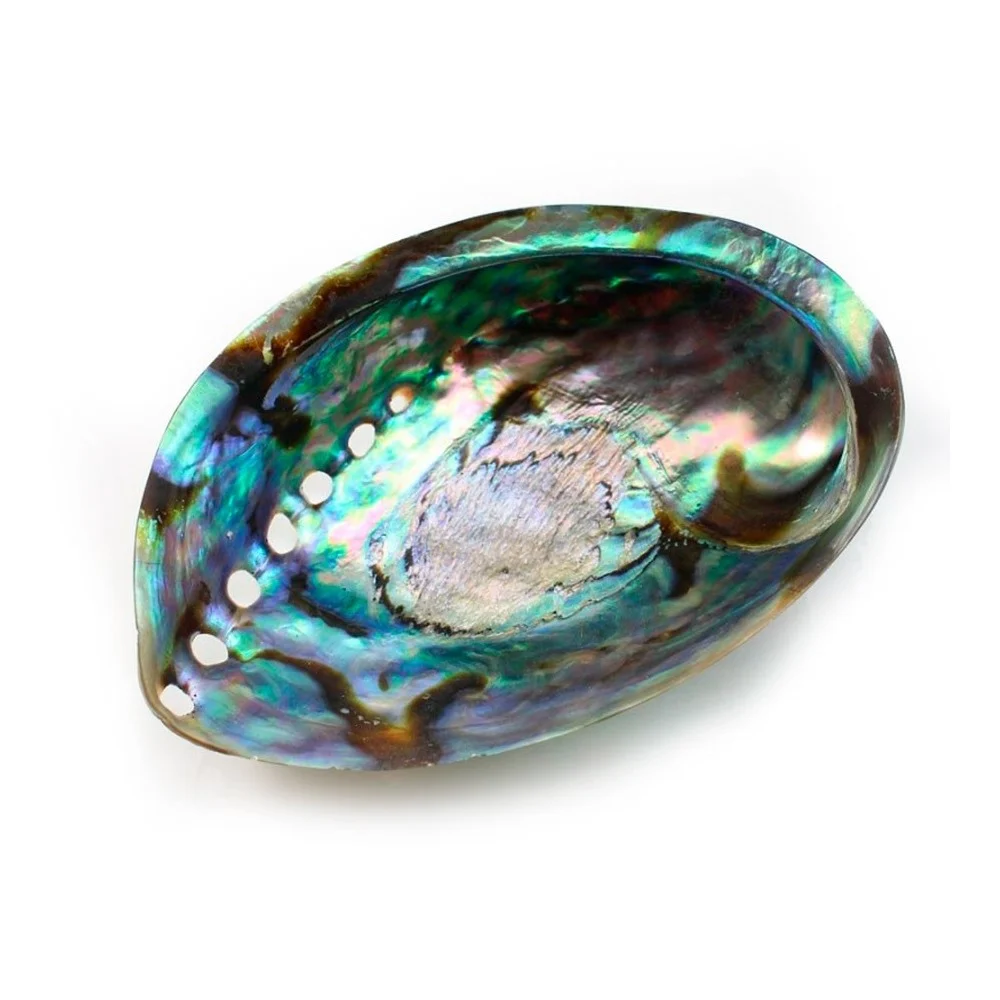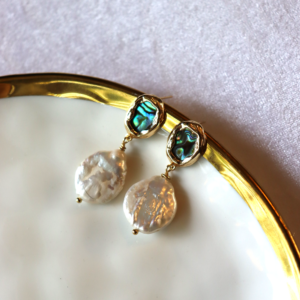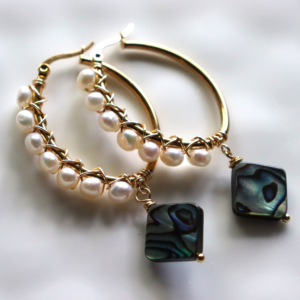abalone:

Physical properties
Abalone is an organic gemstone derived from the inner shell of the abalone mollusk, a sea snail found in coastal waters. It is renowned for its iridescent, mother-of-pearl appearance, displaying a mesmerizing array of colors, including blues, greens, pinks, and purples. The shell is composed of calcium carbonate and a protein called conchiolin, which gives it its unique luster and durability. With a hardness of 2.5-4 on the Mohs scale, abalone is relatively soft and requires careful handling.
history
Abalone has been used by coastal cultures for thousands of years. Indigenous peoples of the Americas, such as the Chumash and Maori, used abalone shells for tools, jewelry, and ceremonial objects. In ancient China, it was prized for its beauty and believed to bring good fortune. Abalone has also been used in inlay work and decorative arts, particularly in furniture and musical instruments, due to its vibrant colors and reflective qualities.
Symbolism & Beliefs
Abalone is often associated with emotional healing, protection, and harmony. Its connection to the ocean links it to themes of fluidity, intuition, and emotional balance. Many believe it helps soothe emotional wounds, enhance creativity, and promote a sense of peace. It is also seen as a stone of transformation, helping individuals navigate change with grace and resilience.


